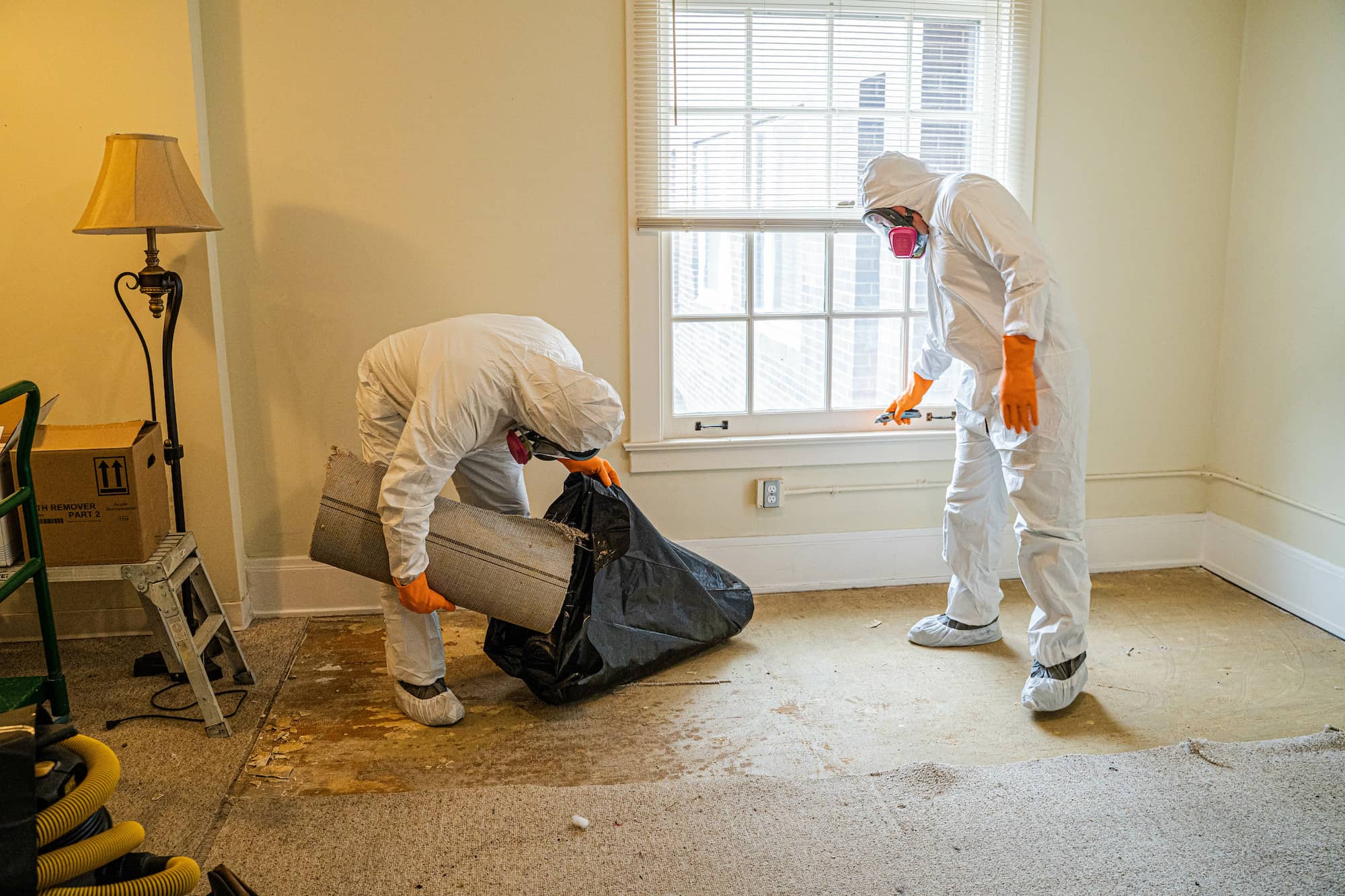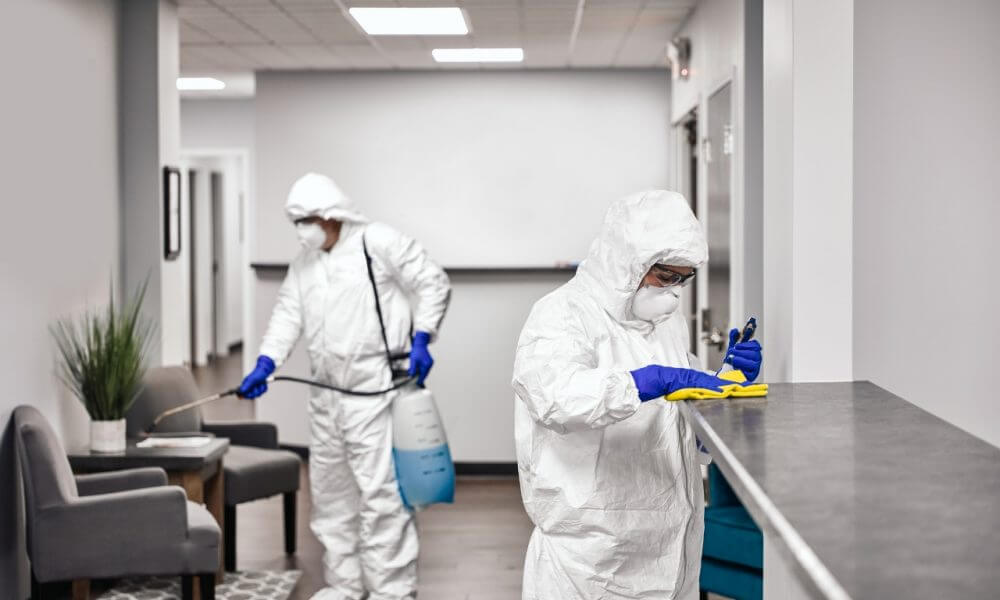Mold Remediation Solutions: Securing Your Residential Property from Mold And Mildew Damage
Mold Remediation Solutions: Securing Your Residential Property from Mold And Mildew Damage
Blog Article
Professional Biohazard Cleaning and Decontamination for Blood, Bodily Fluids, and Hazardous Materials
The potential wellness dangers linked with direct exposure to biohazards underscore the essential requirement for thorough handling and complete clean-up. As we browse the complex landscape of biohazard cleaning, comprehending the subtleties of policies, compliance, and the customized devices at play ends up being important in ensuring a secure and thorough purification process.
Wellness Threats of Biohazard Exposure
Exposure to biohazards positions considerable health and wellness dangers that can result in severe consequences for individuals and neighborhoods alike. Biohazards encompass a large range of biological compounds, including blood, physical liquids, mold and mildew, germs, viruses, and various other potentially infectious products. When people come right into contact with these biohazards, whether through accidents, improper handling, or environmental direct exposure, they face the risk of having significant illnesses or diseases.
Among the key wellness threats connected with biohazard direct exposure is the transmission of contagious diseases. Bloodborne pathogens such as HIV, liver disease B and C, and numerous germs can be present in biohazardous materials, posing a straight hazard to human health and wellness. Inhaling airborne biohazards like mold and mildew spores or coming right into contact with contaminated surface areas can likewise cause respiratory issues, allergic reactions, and various other unfavorable health results.
In addition, biohazard direct exposure can have long-lasting health implications, with some conditions materializing years after the initial call (Blood Cleanup). Consequently, it is crucial to prioritize correct biohazard cleaning and decontamination to alleviate these health threats and guarantee the safety and security of people and communities

Specialized Training for Biohazard Clean-up
When it comes to dealing with biohazard cleaning efficiently and safely, specialized training plays an essential duty in ensuring proper purification treatments are followed. Biohazard cleanup needs certain expertise and abilities to efficiently reduce dangers related to bloodborne virus, bodily fluids, and hazardous materials. Experts learnt biohazard clean-up undertake strenuous guideline on just how to securely handle, eliminate, and throw away biohazardous products to avoid contamination and exposure.
Specialized training for biohazard cleanup covers a range of vital topics, including appropriate individual safety equipment (PPE) use, bloodborne virus recognition, purification techniques, and contaminated materials disposal methods. People learnt biohazard clean-up are geared up with the required proficiency to assess contamination degrees, recognize prospective risks, and apply appropriate cleaning treatments in compliance with regulatory criteria.
Continual training and education are critical in the field of biohazard cleaning to stay updated on the current decontamination modern technologies, safety and security procedures, and regulations. By spending in specialized training, biohazard clean-up professionals can properly react to emergency cleaning circumstances and safeguard both public wellness and the atmosphere.
Importance of Correct Decontamination Strategies
Using proper purification techniques is critical in biohazard clean-up to effectively get rid of hazardous products and minimize health and wellness risks. Efficient purification not only makes certain the removal of noticeable traces of blood, bodily fluids, and various other biohazards however additionally targets invisible microorganisms that might position significant health dangers otherwise correctly gotten rid of. By following rigid decontamination procedures, educated professionals can substantially reduce the danger of direct exposure to unsafe microorganisms, viruses, and microorganisms that can result in infections or illness.
Proper decontamination methods entail making use of specialized devices and anti-bacterials that are especially designed to neutralize biohazards successfully. Detailed cleaning and disinfection of contaminated areas are necessary to avoid the spread of microorganisms and make certain a useful source secure setting for occupants. Additionally, the right disposal of biohazardous waste adhering to decontamination procedures is crucial in protecting against contamination of other surfaces or individuals.

Tools and Devices for Safe Clean-up
When dealing with blood, bodily liquids, or unsafe materials, biohazard cleansing specialists rely on specialized equipment to decrease exposure dangers and extensively decontaminate the afflicted location. Additionally, biohazard cleaning kits containing disinfectants, absorbing products, and biohazard bags are used to safely have and get rid of of infected things.
Advanced cleaning tools like hospital-grade disinfectants, HEPA-filtered vacuum cleaners, More Bonuses and misting equipments are employed to sterilize surfaces and get rid of biohazards properly. Specialized equipment such as sharps containers and biohazard waste disposal bins are used to securely handle sharp things and biohazardous waste products. By making use of the right equipment and tools, biohazard cleaning professionals can ensure an extensive cleaning procedure that prioritizes safety and reduces health and wellness dangers for both employees and residents of the affected room.
Laws and Compliance in Biohazard Cleaning
Appropriate adherence to laws and conformity criteria is paramount in biohazard cleansing to make certain the safety and security of both employees and the setting. Federal government firms such as OSHA (Occupational Security and Health And Wellness Administration) and the EPA (Epa) have developed details standards for biohazard Home Page clean-up procedures to minimize wellness threats and ecological contamination. These policies cover a series of aspects consisting of the handling, transportation, and disposal of biohazardous materials, as well as the essential training and safety devices required for employees included in the cleanup procedure.
Biohazard cleansing companies must remain updated with these regulations to assure that their operations meet the called for security standards. Failing to follow these regulations can cause severe effects, including penalties, lawful action, and threatening the health of people and the atmosphere. By adhering to rigid regulations and conformity measures, biohazard cleansing companies can properly reduce threats and guarantee a extensive and safe clean-up procedure for all parties entailed.
Conclusion
In verdict, biohazard cleaning and decontamination call for specialized training, appropriate strategies, and adherence to policies. Direct exposure to blood, physical fluids, and harmful products poses considerable wellness risks, making it important to make use of the right devices and devices for secure cleanup. By complying with stringent methods and guidelines, professionals can successfully minimize the threats associated with biohazard exposure and make sure the safety and security of both themselves and others.
As we browse the intricate landscape of biohazard cleanup, comprehending the subtleties of guidelines, conformity, and the customized tools at play becomes necessary in ensuring a safe and extensive purification procedure. (Blood Cleanup)
When it comes to taking care of biohazard cleaning successfully and securely, specialized training plays a basic duty in making certain correct purification treatments are complied with.Using appropriate decontamination methods is important in biohazard clean-up to efficiently get rid of dangerous materials and minimize wellness threats. Furthermore, biohazard cleaning kits having anti-bacterials, absorptive materials, and biohazard bags are used to securely have and dispose of infected products.
Government agencies such as OSHA (Occupational Safety And Security and Health And Wellness Administration) and the EPA (Environmental Protection Agency) have actually established particular standards for biohazard clean-up procedures to minimize wellness dangers and ecological contamination.
Report this page